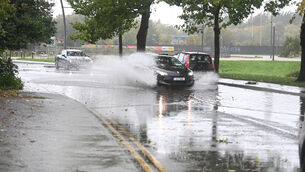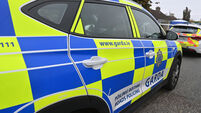River is rich with boats and birds
Our boat is currently in Carrick on Shannon, and, as it headed north, sightings of great crested grebes became more and more frequent. They’ve always been one of my favourite birds.
It’s not just their spectacular summer plumage, with a chestnut ruff and black ‘horns’, it’s the fact that they have some interesting habits. They are the ultimate Irish water bird because they seldom fly and are unable to walk. In some parts of their range they migrate but I’ve never seen one in flight. I think they probably fly at night.
Their inability to walk is because their legs are set very far back on their bodies to give maximum swimming speed under water. On land the best they can manage is to push themselves along on their bellies.
They need to be able to swim fast under water because they feed mainly on small fish with occasional large invertebrates. They are very attentive parents and I’ve been spending a lot of time watching them caring for their striped chicks. When the chicks are small they travel around on their mother’s back. This is to protect them from pike. Pike take quite a lot of young water birds, including small cygnets — the revenge of the fish.
The first thing the chicks are fed is large quantities of feathers. The ones I watched mostly seemed to select white feathers which I though were down and breast feathers from swans. The purpose of this is to line the chick’s stomach to protect it from damage by the bones and spines of fish.
Their commonest prey on the Shannon at this time of year is small perch, a particularly spiny fish. The adults also eat feathers, including their own, but the young have to be taught to do it.
WATCHING these engaging birds is normally quite difficult. They are wary of humans and, when they’re feeding, they tend to dive just as you get the binoculars lined up and to resurface some distance away. Luckily, on the Shannon, they have become used to boats and you can get quite close to them in a cruiser. Their nests are floating structures built in reed beds and are hard to find. They are also very vulnerable to being swamped by the wash from speed boats and jet-skis.
Their wariness is well founded. In the early 19th century they were hunted to the brink of extinction in these islands because of a fashion for using their head and neck feathers on women’s hats. By 1860 they were reduced to 42 pairs in the whole of Britain and Ireland.
This was one of the main motivations for the foundation of the Royal Society for the Protection of Birds, to which BirdWatch Ireland is affiliated. The protection worked because today there are an estimated 2,075 pairs in Ireland alone. However most of these birds are in the north and north-west of the country, which is why sightings of grebes became more frequent as we travelled upstream on the Shannon.
However, their range is increasing as well as their numbers. Fairly recently a pair took up a territory on Leixlip Reservoir in west Dublin.
In winter if the weather is harsh some great crested grebes move to coastal marshes and estuaries and this may be how a pair ended up on the lower Liffey. It’s also thought there might be a small migration to Ireland from continental Europe in bad winters.
Whatever mechanisms are aiding the spread of these birds, the pleasure that I’ve been getting from watching grebes on the Shannon is increased by the thought that they are there as a result of one of the first successes of modern wildlife conservation.
dick.warner@examiner.ie













